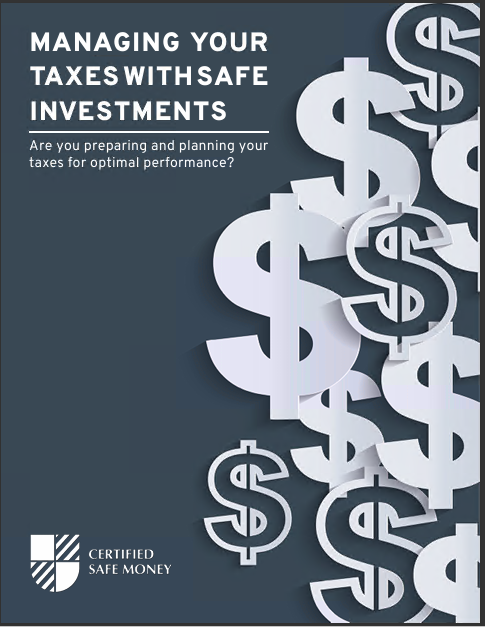Key Takeaways
-
Life insurance can enhance retirement income, but it comes with important considerations regarding cost, tax implications, and liquidity.
-
Always align your life insurance strategy with your broader financial goals to ensure it truly benefits your retirement.
Can Life Insurance Really Secure Your Retirement?
When planning for retirement, you’re probably familiar with traditional options like IRAs, 401(k)s, or annuities. But have you considered incorporating life insurance into your retirement strategy? Before you jump in, it’s essential to ask some critical questions. Let’s dive into four essential points you should explore.
1. What Type of Life Insurance Fits Your Retirement Strategy?
Life insurance isn’t one-size-fits-all, especially when you’re integrating it into your retirement plan. There are generally two categories to consider:
Permanent Life Insurance
Permanent policies—like whole life or universal life—accumulate cash value over time. This cash value is why permanent policies often become part of retirement planning strategies. Here’s how it typically works:
-
Cash Value Growth: Your premiums partly fund a cash-value account, growing on a tax-deferred basis.
-
Borrowing Opportunities: You can borrow against the accumulated cash value or even withdraw it during retirement.
However, remember these policies are usually significantly more expensive than term life insurance. Premiums can be five to ten times higher, making affordability a key consideration.
Term Life Insurance
Term policies provide pure death-benefit coverage for a fixed period—typically 10, 20, or 30 years. These policies are much cheaper but don’t build cash value. They might still have a role in your plan, especially if you have significant obligations early in retirement that you’d want covered should something happen to you.
If your main goal is accumulating funds for retirement, term life insurance might not align with that purpose. However, combining term insurance with investments elsewhere might offer a balanced approach.
2. What are the Real Costs and Benefits?
Life insurance costs significantly impact your overall retirement savings potential. Here’s what to examine:
Premium Commitments
Permanent policies require substantial premiums that can last throughout your lifetime. Over several decades, these payments could add up to tens or even hundreds of thousands of dollars. You need to evaluate if these ongoing costs justify the retirement benefits you anticipate.
Potential Tax Advantages
One major draw of life insurance in retirement planning is its tax benefits:
-
Tax-Deferred Growth: Cash values grow without immediate taxation.
-
Tax-Free Withdrawals: Loans against the policy are generally tax-free if managed correctly.
-
Death Benefits: Paid to beneficiaries without income taxes.
While these tax advantages sound appealing, you must handle withdrawals carefully to avoid inadvertently creating taxable events. Mismanagement can result in significant tax liabilities that diminish your planned retirement funds.
Policy Fees and Charges
Life insurance policies typically include administrative fees, investment management charges, and surrender charges. These expenses can significantly erode the returns on your cash value accumulation over time. Make sure you fully understand these hidden costs before integrating life insurance into your retirement strategy.
3. How Liquid Is Your Life Insurance?
Liquidity—the ease with which you can access your money—is crucial in retirement. When evaluating life insurance, consider how quickly and affordably you can convert the policy’s value into usable cash.
Accessing Cash Value
Permanent life insurance policies allow policy loans or withdrawals against the accumulated cash value. But be cautious:
-
Loans and Interest: Borrowed amounts accrue interest. If unpaid, interest compounds, potentially reducing your death benefit or even lapsing the policy.
-
Surrender Charges: Withdrawing cash value early, especially within the first 10 to 15 years, can trigger steep penalties.
This limited liquidity can become problematic if you require immediate or frequent access to funds, particularly during unexpected financial emergencies or market downturns.
Comparing Liquidity with Other Retirement Assets
Unlike IRAs, mutual funds, or brokerage accounts—which typically offer quicker, penalty-free access after retirement age—life insurance cash values are less flexible. You’ll need a clear strategy for when and how you’ll tap into these funds to ensure they effectively support your retirement without unpleasant surprises.
4. How Does Life Insurance Fit with Your Overall Retirement Goals?
Your retirement strategy shouldn’t focus solely on maximizing income—it should align with your broader financial goals and lifestyle. So ask yourself:
Is Legacy Planning a Priority?
If ensuring financial support for loved ones after your death is important, life insurance can play a valuable role. Permanent policies guarantee a death benefit as long as premiums are paid, securing your legacy regardless of market performance.
Balancing Income and Protection
Integrating life insurance into your retirement plan requires balancing income generation with protection needs. Some retirement plans use life insurance to provide a reliable death benefit, allowing retirees to spend other assets more freely, knowing their beneficiaries are secured.
However, overly relying on insurance for income generation could limit flexibility. You may feel trapped paying high premiums or hesitant to access funds due to potential tax consequences.
Diversification and Risk Management
Consider how life insurance complements other retirement investments. Diversification helps spread risk and provides stability. Life insurance policies, especially those with guaranteed cash values, can offer predictable returns that counterbalance more volatile assets like stocks.
But be careful—relying too heavily on life insurance might limit growth opportunities. Striking the right balance between safety and growth is crucial to sustaining a long retirement.
Smart Steps to Evaluate Your Decision
As you ponder these four questions, here are practical steps to refine your decision:
-
Run the Numbers: Calculate realistic projections of costs versus benefits. Include policy fees, potential borrowing costs, and possible surrender charges.
-
Clarify Your Tax Position: Consult with a financial advisor or tax professional to thoroughly understand potential tax consequences.
-
Evaluate Alternative Investments: Compare life insurance to other retirement-saving vehicles to determine the best alignment with your retirement strategy.
Taking these steps ensures your life insurance decision is well-informed, balanced, and genuinely supportive of your retirement ambitions.
Making Life Insurance Work for You
Life insurance, when thoughtfully integrated, can be a powerful retirement tool, providing stability, protection, and potentially favorable tax treatment. However, this benefit comes with significant costs, responsibilities, and potential complications. You must approach your decision thoughtfully, carefully weighing your personal retirement goals against the commitments involved.
By addressing these critical questions upfront, you’re more likely to integrate life insurance into your retirement plan in a way that enhances rather than complicates your financial future.











